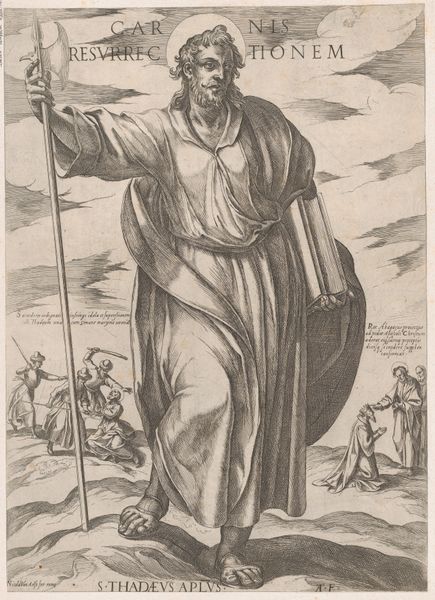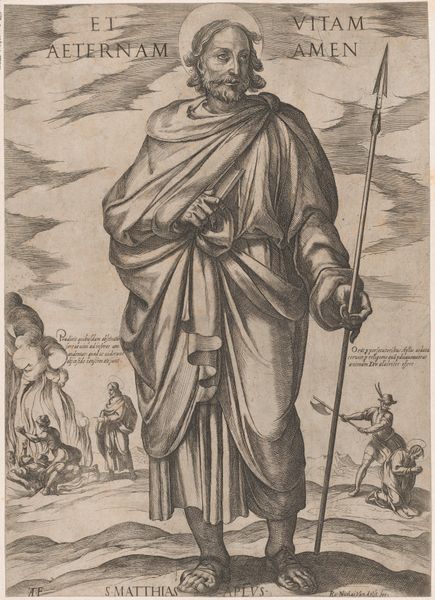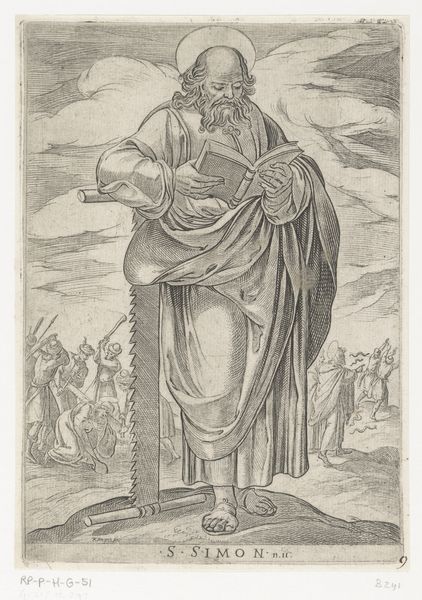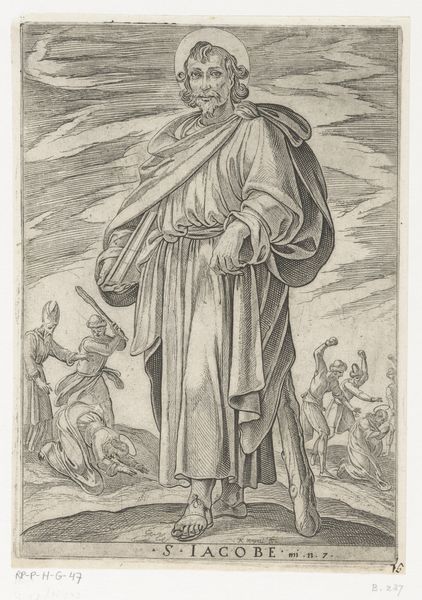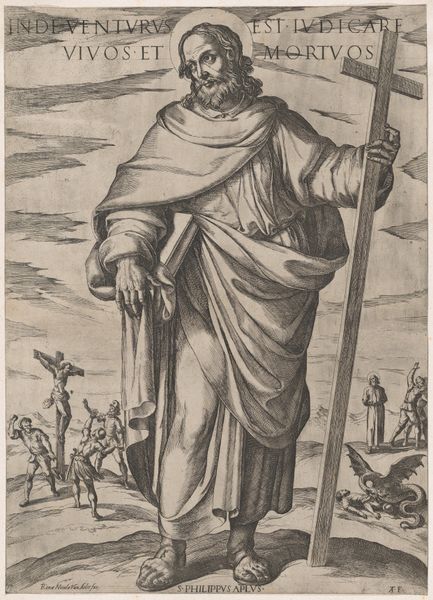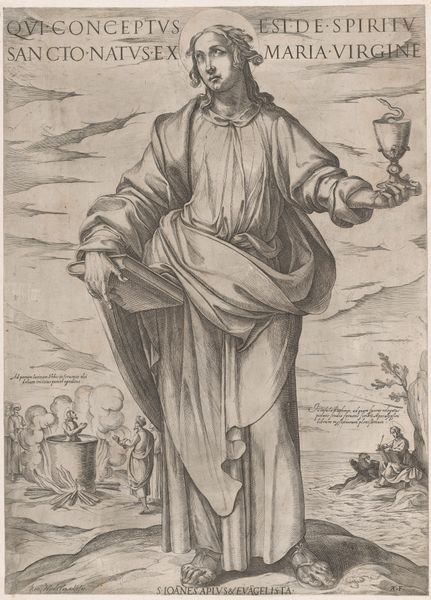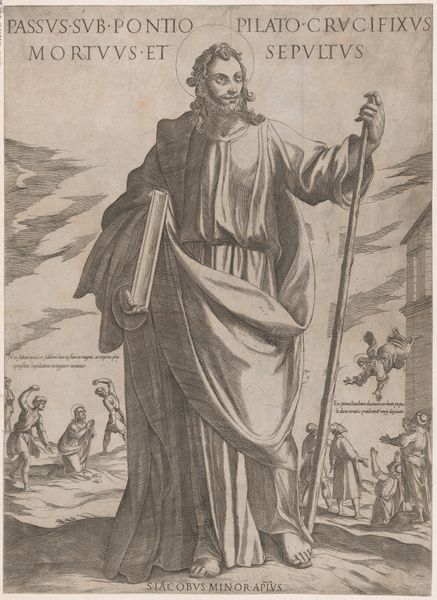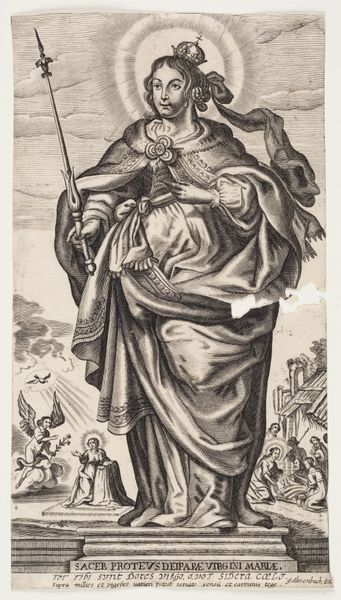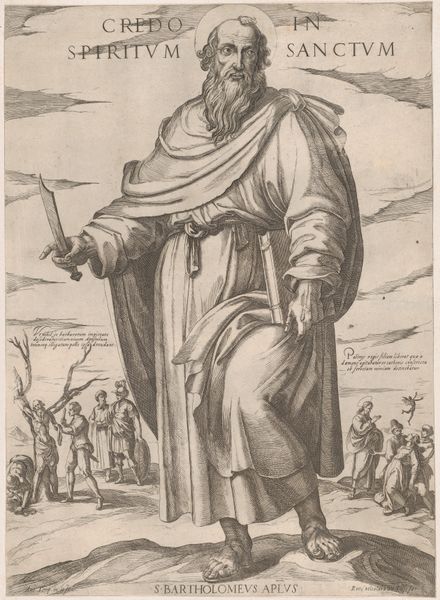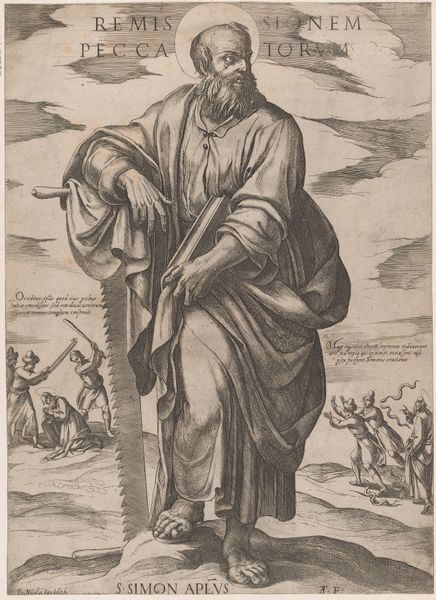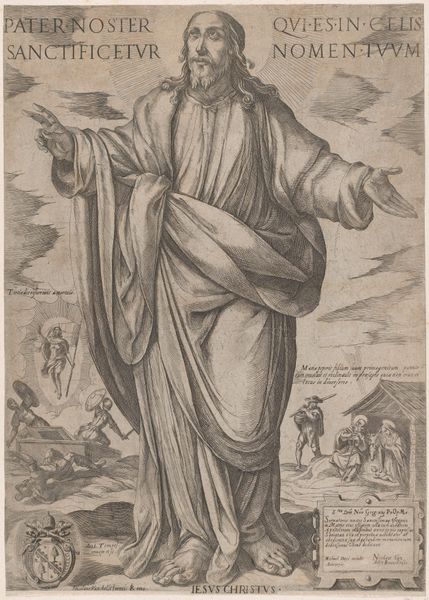
drawing, print, engraving
#
portrait
#
drawing
#
baroque
# print
#
figuration
#
line
#
history-painting
#
engraving
#
christ
Dimensions: sheet: 21 5/8 x 15 3/4 in. (55 x 40 cm) plate: 20 1/2 x 14 5/8 in. (52 x 37.2 cm)
Copyright: Public Domain
Editor: Here we have Antonio Tempesta's engraving of "St. James Major," likely created between 1555 and 1630. It's incredible how detailed it is, even with such a limited palette. The figure of St. James seems to tower over the landscape. What do you make of this print? Curator: Well, let’s consider this print in the context of the Counter-Reformation. How might this imposing figure of St. James function within the broader religious and political landscape of the time? He holds the pilgrim's staff, symbolic of religious journeys, but also power. Note the supplication occurring in the lower left, set against the backdrop of a walled city far off to the right. Editor: I hadn't thought of it that way. It feels like there's a power dynamic at play, but also an encouragement for faithful pilgrimage and evangelism. The city on the hill reminds me of scripture too. Curator: Exactly. Prints like these were widely disseminated, serving as tools for religious instruction and propaganda. Consider the inscriptions above the figure's head, as well as the symbols decorating the shoulder clasps on his cloak: scallops and something akin to a shield bearing a pyramid? How might they serve a function to reassert Church authority and doctrine amid religious upheaval? Editor: I wonder, were prints like these aimed at a specific audience? Were they primarily for the educated elite or did they circulate more broadly? Curator: A key question. While wealthy patrons commissioned art, prints had a unique role in democratizing imagery. Multiple copies meant wider distribution, influencing public perception. Consider the cost versus an oil painting. These allowed the message, in this case a representation of Saint James as a symbol of piety and perhaps of worldly power, to filter down to the masses. What implications do you think this had on popular beliefs, on popular understanding? Editor: It sounds like art could really function as a political force back then. It’s interesting to think about the public impact prints like this had. Thank you for illuminating the religious context here. Curator: And you, for making us think of audience and democratisation. I learned something today as well!
Comments
No comments
Be the first to comment and join the conversation on the ultimate creative platform.
